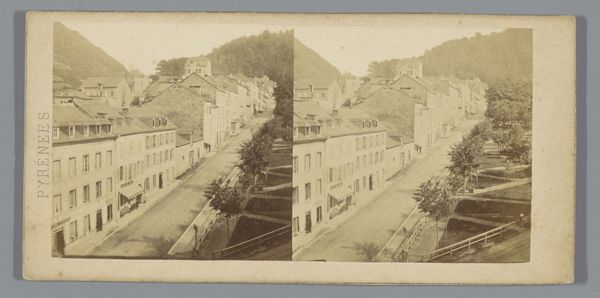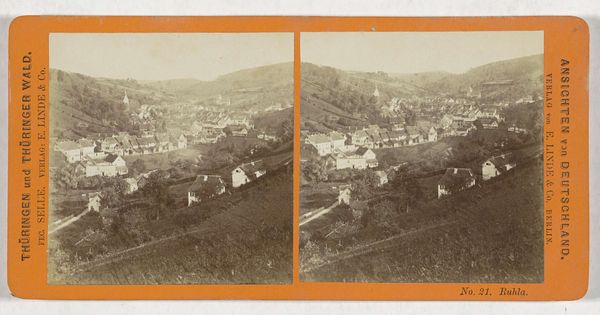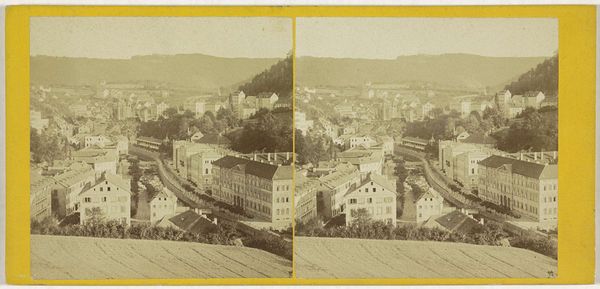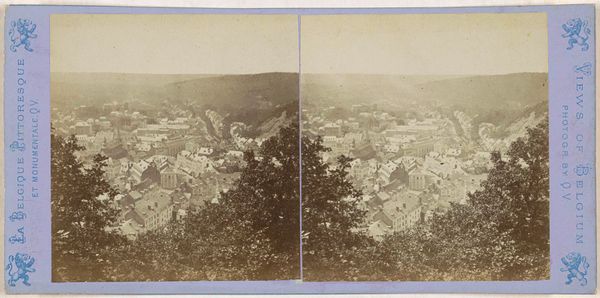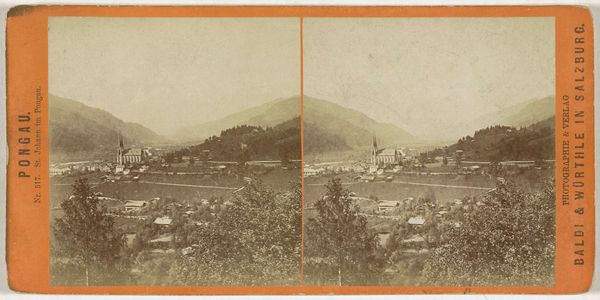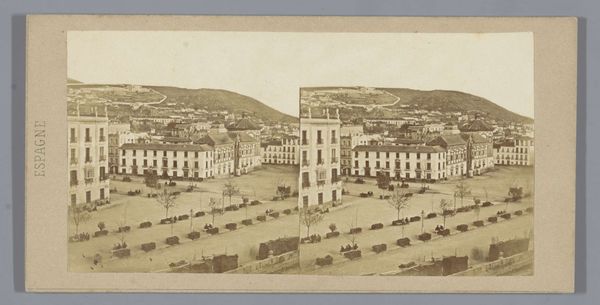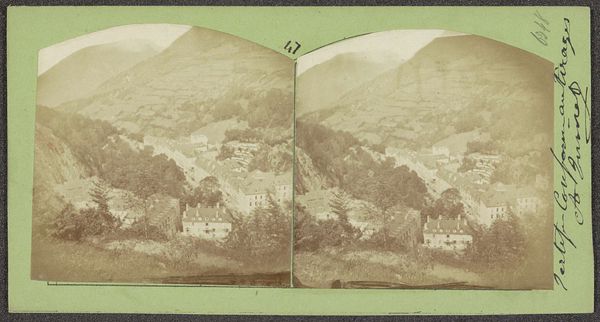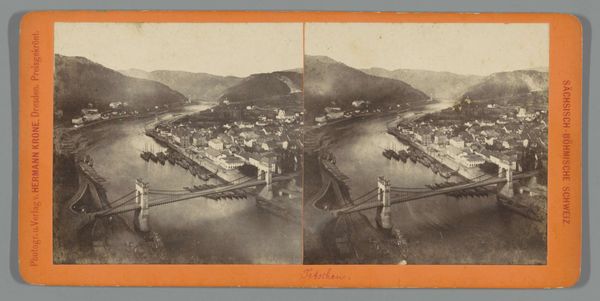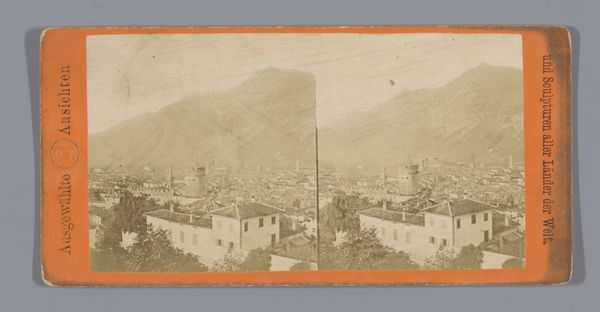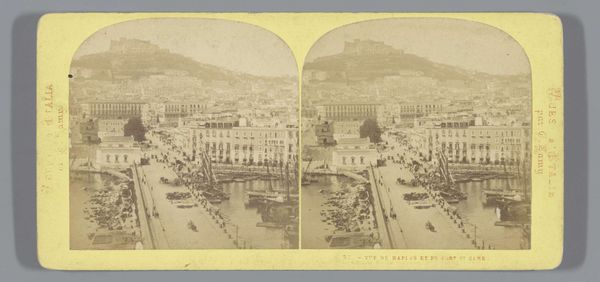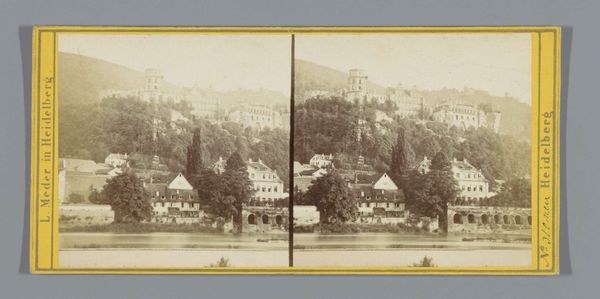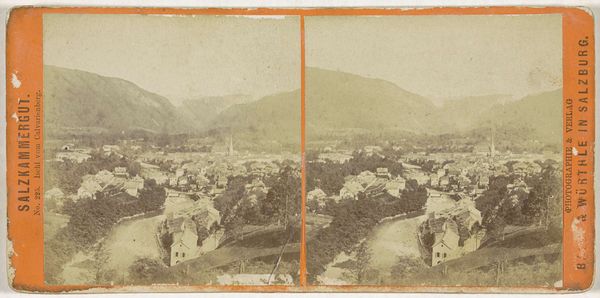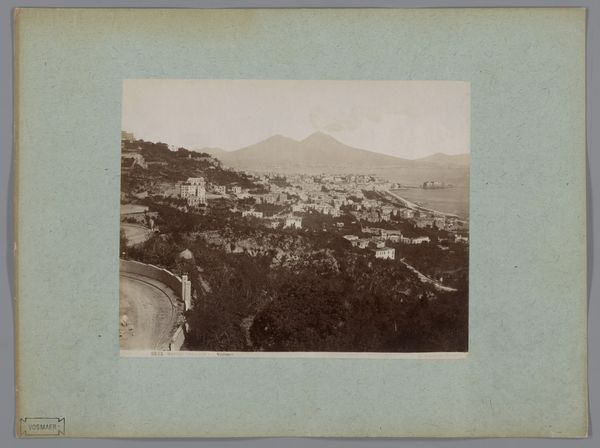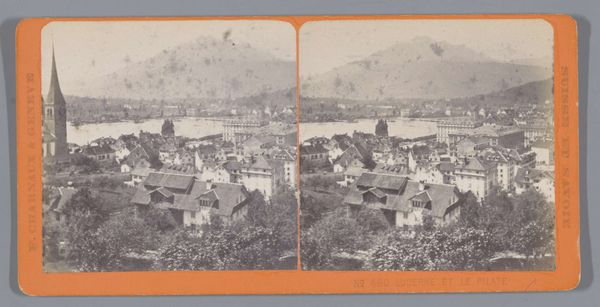
daguerreotype, photography, albumen-print
#
landscape
#
daguerreotype
#
photography
#
mountain
#
cityscape
#
albumen-print
Dimensions: height 83 mm, width 173 mm
Copyright: Rijks Museum: Open Domain
Editor: So, this is a stereoscopic albumen print titled "View of Nice and the Alps," made around 1860 by Furne Fils and H. Tournier. The composition is just striking; the rigid architecture softens as it fades toward the distant Alps. How would you interpret this work? Curator: Notice the double image, meant for viewing through a stereoscope. This reveals more than just a landscape; it invites a deeper, almost visceral connection to the scene. Mountains often serve as symbols of stability, permanence, or spiritual enlightenment, appearing across cultures to represent humanity's striving toward something beyond the everyday. Does seeing the Alps here, from the vantage of the city, evoke any feelings or memories? Editor: It’s interesting how the image wants you to feel grounded in Nice, but with the mountains always looming. I guess it creates a sense of both belonging and longing? Curator: Exactly! And look at how the photographers captured Nice itself. Cities are full of symbolism – power, trade, culture. In this era, photography itself was new technology promising 'truthful' records, so this particular view attempts to capture what the late 19th-century people felt about progress versus nature. The repeating buildings, compared to the jagged Alps... it is a play between order and chaos. How do these contrasting visual elements work together to reflect society's evolving self-image? Editor: So the very act of viewing, using this stereoscope, places you within the frame of that past society as well? Almost like a time capsule... Curator: Precisely. It invites us to examine our own cultural memories – What symbols do we use today to represent ourselves? How has our relationship to landscape shifted? Editor: That really changes my view of what seemed like a simple landscape! Curator: The layering of symbols can lead to so much knowledge! The simple photographic "truth" may tell a richer story if you consider its symbols across time and cultures.
Comments
No comments
Be the first to comment and join the conversation on the ultimate creative platform.
